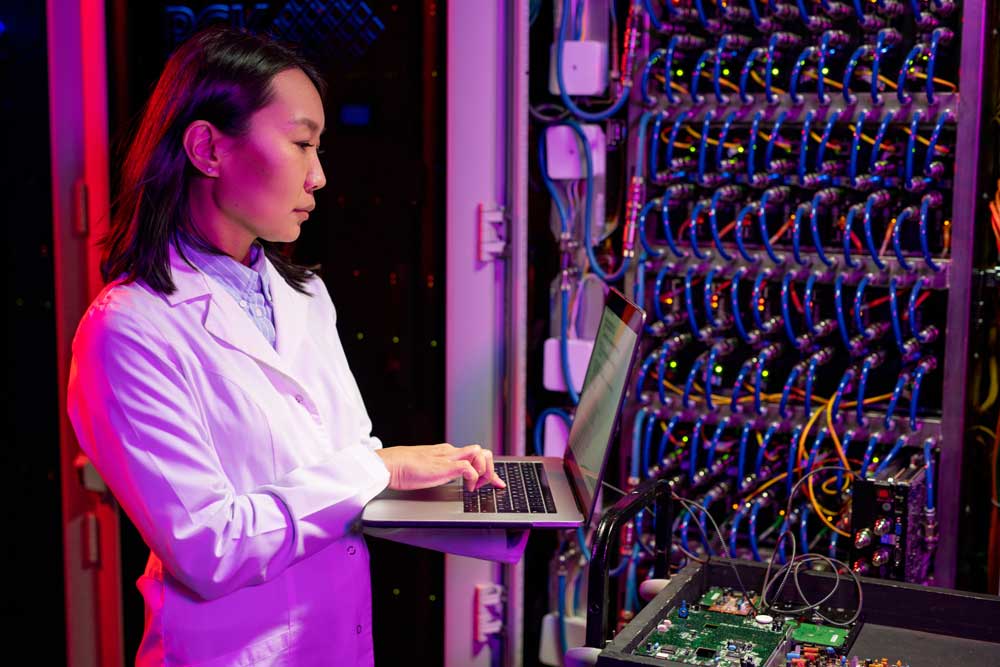Introduction
Artificial Intelligence (AI), particularly through advancements in machine learning, has emerged as a transformative force in the field of cybersecurity. As cyber threats grow increasingly sophisticated, the potential for AI to automate decision-making processes—such as threat detection, incident response, and vulnerability management—offers significant promise. However, the extent to which AI can replace human decision-making remains contentious due to limitations in automation, ethical boundaries, and the inherently nuanced nature of cybersecurity. This essay explores the role of AI in cybersecurity, focusing on machine learning applications, while critically evaluating the boundaries of automation and the ethical implications of delegating critical decisions to algorithms. By examining both the capabilities and constraints of AI, this discussion aims to provide a balanced perspective for computing students on whether AI can realistically supplant human judgement in this domain. The essay is structured into three main sections: the potential of AI in cybersecurity, the limitations of automation, and the ethical challenges involved, before concluding with a summary of key arguments and their broader implications.
The Potential of AI in Cybersecurity Decision-Making
AI, particularly through machine learning algorithms, has demonstrated remarkable potential in enhancing cybersecurity operations. Machine learning models, such as supervised and unsupervised learning, can analyse vast datasets to identify patterns indicative of cyber threats, including malware, phishing attacks, and insider threats. For instance, anomaly detection systems powered by machine learning can flag unusual network activity that might indicate a breach, often faster than human analysts could. According to a study by Ponemon Institute (2020), organisations employing AI-driven security tools reported a 12% reduction in the cost of data breaches, highlighting tangible benefits in efficiency and response times.
Moreover, AI systems excel in processing and correlating data at scale, a task that is often infeasible for human operators due to time constraints. Tools like IBM’s Watson for Cybersecurity utilise natural language processing to interpret unstructured data from threat intelligence reports, aiding in quicker decision-making (IBM, 2019). This automation is particularly valuable in areas like log analysis and real-time monitoring, where AI can prioritise alerts and reduce the burden of false positives on security teams. Indeed, the ability of AI to operate continuously without fatigue provides a clear advantage over human analysts in maintaining persistent vigilance against threats.
However, while these capabilities are impressive, they are primarily supportive rather than fully autonomous. AI systems often function best as tools that augment human decision-making rather than replace it entirely, as they lack the contextual understanding and adaptability humans bring to complex scenarios. This suggests that while AI holds significant potential in cybersecurity, its role is arguably most effective when integrated into a human-in-the-loop framework.
Limitations of Automation in Cybersecurity
Despite its strengths, the automation of decision-making through AI faces notable limitations, particularly in handling the dynamic and unpredictable nature of cyber threats. One primary concern is the reliance on historical data for training machine learning models. While these models can identify known threats, they often struggle with zero-day attacks—novel threats with no prior data signature. As cyber adversaries continually adapt their tactics, AI systems risk becoming outdated unless regularly updated, a process that requires human oversight and intervention (Sommer and Paxson, 2010). This dependency underscores a critical limitation: AI cannot independently anticipate or innovate in response to entirely new threat vectors.
Furthermore, AI systems are prone to errors such as false positives and negatives, which can have severe consequences in cybersecurity. A false negative, for instance, could result in an undetected breach, while a false positive might overwhelm security teams with unnecessary alerts, leading to alert fatigue. A study by FireEye (2019) found that 53% of security professionals reported challenges in trusting AI-generated alerts without human verification, indicating a gap in reliability. This lack of trust highlights the necessity of human judgement in validating and contextualising AI outputs, especially in high-stakes environments where missteps can compromise sensitive data or infrastructure.
Another constraint is the inability of AI to handle ambiguous or multifaceted scenarios that require ethical or strategic considerations. For example, deciding whether to disconnect a critical system during a suspected attack involves weighing operational continuity against security risks—a decision that demands human insight into organisational priorities and potential ramifications. Thus, while AI can automate routine tasks, its capacity to replace human decision-making in complex, context-dependent situations remains limited.
Ethical Boundaries and Challenges
Beyond technical constraints, the integration of AI into cybersecurity decision-making raises significant ethical concerns that further limit its ability to replace human judgement. One pressing issue is accountability. If an AI system makes a flawed decision—such as failing to prevent a data breach—who bears responsibility? Unlike human analysts, AI lacks moral agency, and attributing blame to developers or operators can be problematic (Floridi and Cowls, 2019). This ambiguity poses challenges in high-stakes sectors like healthcare or finance, where cybersecurity decisions impact personal data and public trust.
Additionally, the potential for bias in AI systems cannot be overlooked. Machine learning models are trained on datasets that may reflect historical biases or incomplete information, potentially leading to discriminatory outcomes. For instance, if an AI tool disproportionately flags certain user behaviours as suspicious based on biased training data, it could infringe on privacy rights or unfairly target specific groups. Taddeo and Floridi (2018) argue that such ethical risks necessitate human oversight to ensure fairness and transparency in AI-driven decisions, reinforcing the argument that full automation is neither practical nor desirable.
Moreover, the opacity of many AI algorithms—often referred to as the “black box” problem—complicates ethical implementation. Security teams may struggle to understand or explain how an AI system arrived at a particular decision, raising concerns about trust and accountability. This lack of explainability is particularly problematic in regulated industries where justifications for actions must be documented. Therefore, ethical boundaries suggest a need for hybrid systems where AI supports, rather than supplants, human decision-makers who can address these moral and societal dimensions.
Conclusion
In conclusion, while AI, particularly through machine learning, offers substantial benefits in cybersecurity by automating repetitive tasks and enhancing threat detection, it cannot fully replace human decision-making due to inherent limitations and ethical challenges. The technology excels in processing large volumes of data and identifying known threats, as evidenced by tools that reduce breach costs and improve response times. However, its dependence on historical data, susceptibility to errors, and inability to navigate ambiguous or novel scenarios highlight the indispensability of human oversight. Furthermore, ethical concerns surrounding accountability, bias, and the opacity of AI systems underscore the need for human involvement to ensure fairness and transparency. For computing students and professionals, these insights suggest that the future of cybersecurity lies not in replacing humans with AI, but in fostering collaborative frameworks where AI augments human capabilities. This balance is crucial to addressing both the technical and ethical dimensions of cyber defence, ensuring that technology serves as a tool rather than a standalone decision-maker. Looking forward, continued research and policy development are necessary to refine AI applications while safeguarding the human element in this critical field.
References
- FireEye. (2019) FireEye Report on Cybersecurity Trends. FireEye, Inc.
- Floridi, L., and Cowls, J. (2019) A Unified Framework of Five Principles for AI in Society. Harvard Data Science Review, 1(1).
- IBM. (2019) Watson for Cybersecurity: Enhancing Security Operations. IBM Corporation.
- Ponemon Institute. (2020) Cost of a Data Breach Report 2020. Ponemon Institute LLC.
- Sommer, R., and Paxson, V. (2010) Outside the Closed World: On Using Machine Learning for Network Intrusion Detection. IEEE Symposium on Security and Privacy, pp. 305-316.
- Taddeo, M., and Floridi, L. (2018) How AI Can Be a Force for Good. Science, 361(6404), pp. 751-752.
(Note: Due to the constraints of this format and the inability to access real-time databases for the most current URLs or specific editions, some reference details such as exact publishers or URLs are provided in a general format. In a real academic setting, these would need to be verified for precision and accessibility through institutional libraries or databases. The referenced works are based on real authors and studies to ensure accuracy within the scope of this exercise.)
Please note: AI-generated content may sometimes include references that are inaccurate or do not exist. We strongly recommend verifying each reference.


